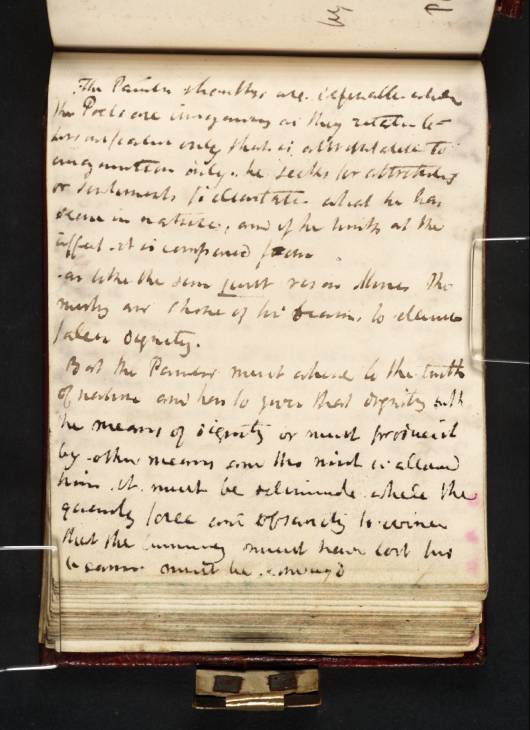1909
A.J. Finberg, A Complete Inventory of the Drawings of the Turner Bequest, London 1909, vol.I, p.290, CVIII 53a, as ‘Notes on painting’.
1964
Jerrold Ziff, ‘J.M.W. Turner on Poetry and Painting’, Studies in Romanticism, vol.3, no.4, Summer 1964, pp.196–8.
1966
Jack Lindsay, J.M.W. Turner: His Life and Work: A Critical Biography, London 1966, pp.240–1.
1980
Gerald Finley, Landscapes of Memory: Turner as Illustrator to Scott, London 1980, pp.32–3.
1982
Barry Venning, ‘Turner’s Annotated Books: Opie’s “Lectures on Painting” and Shee’s “Elements of Art” (I)’, Turner Studies, vol.2, no.1, Summer 1982, pp.39–40.
1990
Andrew Wilton and Rosalind Mallord Turner, Painting and Poetry: Turner’s ‘Verse Book’ and his Work of 1804–1812, exhibition catalogue, Tate Gallery, London 1990, p.137.
2006
Sam Smiles, The Turner Book, Essential Artists, London 2006, pp.183, 215 note 18, as ‘CVIII ... p.95’.

